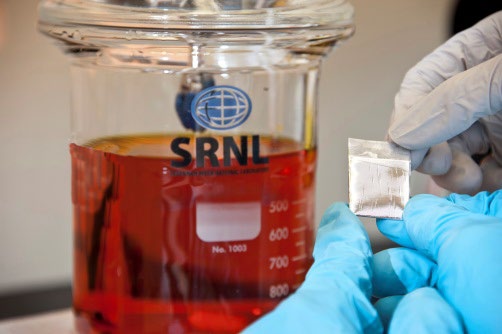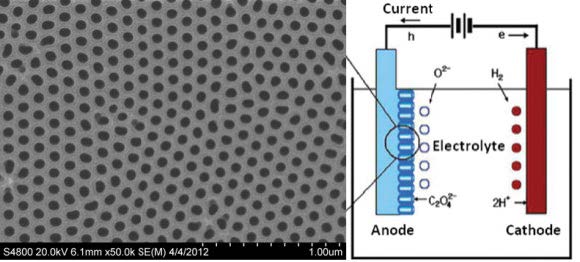Tech Briefs
Savannah River National Laboratory
Photonic Crystal Scintillator
Researchers at the Savannah River National Laboratory (SRNL) have developed significant energy resolution enhancement of scintillation-based detectors by increasing photon yield.
Background
Next generation scintillators will require improved detection sensitivity of weak gamma ray sources, thermal neutrons and rapid unambiguous isotope identification. These are principally dependent on the energy resolution and timing resolution, of the detector. The best energy resolution of a scintillator detector is achieved with maximized photon yields, which are critically limited by total internal reflection within the scintillator. This leads to a lower number of scintillation photons reaching the photodetector, resulting in an undesirable decrease in the energy resolution of the scintillation counter.

At a glance
- Convenient
- Low cost
- Resists extreme conditions
- Adaptable to current instrumentation
- Increased detection area
- U.S. Patent 9,103,921 B2
A better alternative
This application uses photonic crystals (PhCs) for enhanced light outcoupling from the scintillator surface. PhCs allow for efficient light extraction through two-dimesional nanoscale patterns on the scintillator, which inhibit light propagation along directions transverse to the surface and lead to redistribution of saved energy. SRNL has developed a convenient low-cost method for creating these nanoscale patterns using a highly ordered porous anodic alumina membrane as a selective dry etching mask for large-area pattern transfer.

Applicable uses
This technology would be useful to both government and commercial customers. This PhC fabrication method could be used by various scintillator manufacturers. Various government and safeguards programs could apply this scintillator detector application for verification and for PhC pattern transfer monitoring activities, such as radiation portals, On-Dock Rail, enhancements to hand-held digital gamma spectrometers with multiple scintillators to detect enrichment levels. Potential government customers could use this application for non-destructive assay of dry cask storage systems via these detectors.

Nanoporous anodic alumina templates
Partnering opportunities
SRNL invites interested companies with proven capabilities in this area of expertise to develop commercial applications for this process under a cooperative research and development agreement (CRADA) or licensing agreement. Companies Interested in licensing will be requested to submit a business plan setting forth company qualifications, strategies, activities, and milestones for commercializing this invention. Qualifications should include past experience at bringing similar products to market, reasonable schedule for product launch, sufficient manufacturing capacity, established distribution networks, and evidence of sufficient financial resources for product development and launch.
Download Tech Brief
Contact Information
Savannah River National Laboratory
E-mail: partnerships@srnl.doe.gov